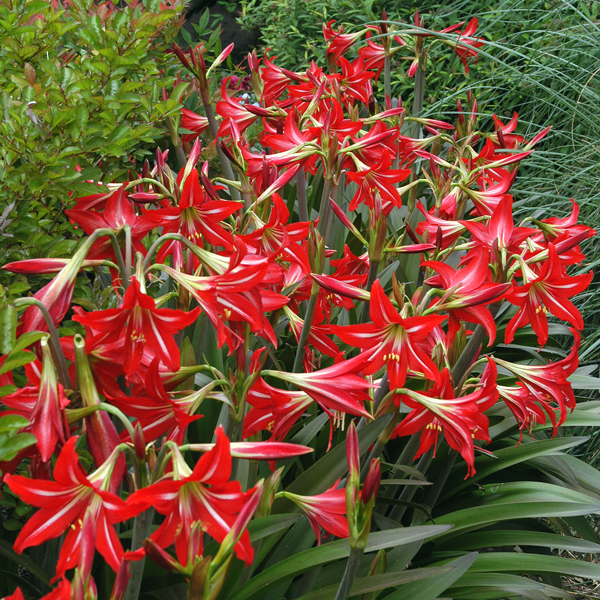Another flower of the season
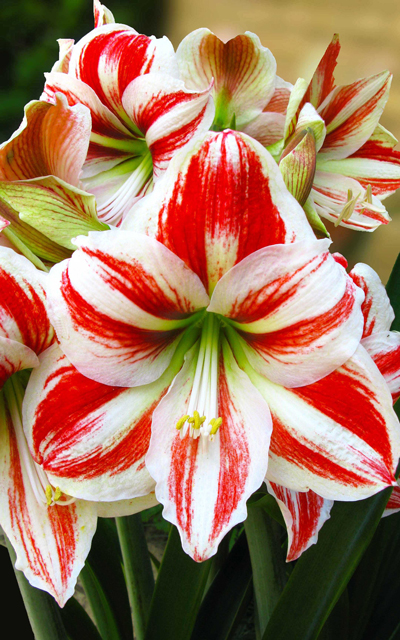
We have all kinds of oddities in this great group of bulbs. It’s going to be a pleasure uncovering them for you.
• They’re not actually “Amaryllis,” but in the genus Hippeastrum. (If you want to read the most confusing bit of botanical taxonomy, see what Wikipedia outlines on the naming of “Hippeastrum.” It seems to be written by a reputable authority.)
• They’re native to the Western Hemisphere in tropical and subtropical regions in primarily, but not exclusively, the Southern Hemisphere. Got all that coordinated? Mainly Brazil and Argentina, but north to Mexico and even islands in the Caribbean.
• There are upwards of 100 species, many of them able to cross pollinate with one another. The result has been hundreds of hybrids in the marketplace.
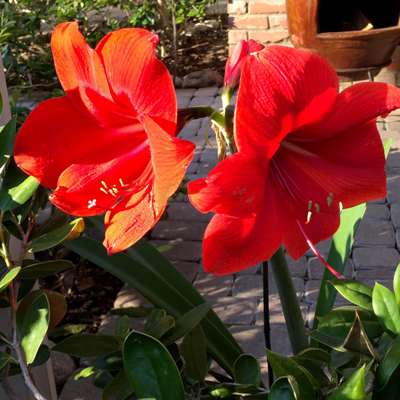
• Flower colors are most commonly red, pink, and white, although bicolors, striped, and banded blooms are observed. Salmon-red and even orange-red blooms are now available.
• Flower sizes range from 5 or 6 in. up to giants 7 to 8 in. in diameter. Each stalk may produce 4 or 5 blooms that last for many days each.
• Single-flowering types have been the norm, but more recently hybrids with a second row of petals have been developed. You guessed it: they’re known as “double-flowering.”
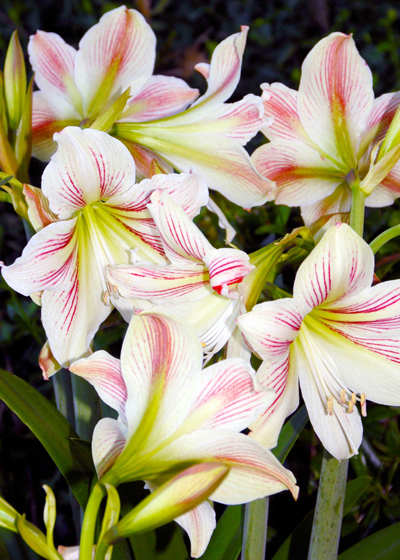
• The bulbs can be quite large. In fact, bulb size is proportionate to flower size and numbers, so if you want the biggest show, you’ll buy the biggest bulbs.
• If you want to keep your amaryllis from one year to the next so that you can get it to flower year after year, leave the flower stalk in place after all the blooms have faded. Trim off any fruit and seeds that try to develop. Leave the stem in place to help the leaves with photosynthesis.
• Keep the plant in morning sun and afternoon shade all spring and summer. Keep it moist and growing actively all the while. Fertilize it with a complete and balanced houseplant food monthly.
• Starting in September, withhold water from the plant so that its leaves will yellow and wither. If you must, lay the pot on its side so you don’t slip up and water it. After 8 or 9 weeks, repot the bulb into the same pot or the next size larger. Use a very porous potting soil containing no native Texas topsoil – just sphagnum peat, perlite, and compost. Pot the bulb so that one-third of it extends up above the soil line and leave 1 inch of clearance above the potting soil to allow room for watering. Fertilize and water the plant and put it back in bright light.
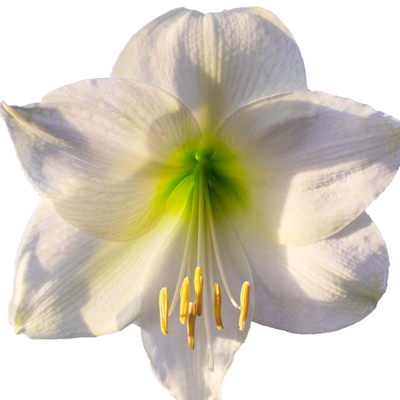
• Protect the plant from freezing temperatures. It should be in full bloom within a few weeks of resuming the good growing conditions.
It should be noted that these fancy hybrid “Christmas” amaryllis varieties can be grown outdoors in warmer parts of South Texas and in protected locations in Central and East Texas. However, extreme cold spells like we faced in February 2021 can kill them, so be forewarned. You’re always safest growing them in pots.
Sources…
I’m always going to steer you toward local independent retail garden centers and flower shops. You can walk in and see the bulbs and talk to the experts. They have great supplies of Christmas amaryllis as we head full speed into the holiday season.
However, just as a curiosity, I did look at both eBay and Etsy and each has hundreds of bulbs of rare and unusual colors. Check their ratings and protect yourself when you buy online. There are also well-known online bulb retailers should you decide to go that way. But buy locally whenever you can.
Hardy amaryllis…
As a closing note, I must mention the popular garden perennial across Texas known as St. Joseph’s lily, or “hardy amaryllis.” It’s probably the most cold-hardy of all the hybrids out of this group, and it also is reported to have been the first hybrid among them. It’s the one you’ll see in old neighborhoods across the southern half of the state each spring blooming its heart out. Lovely plant. Pretty foliage. Gorgeous flowers.

